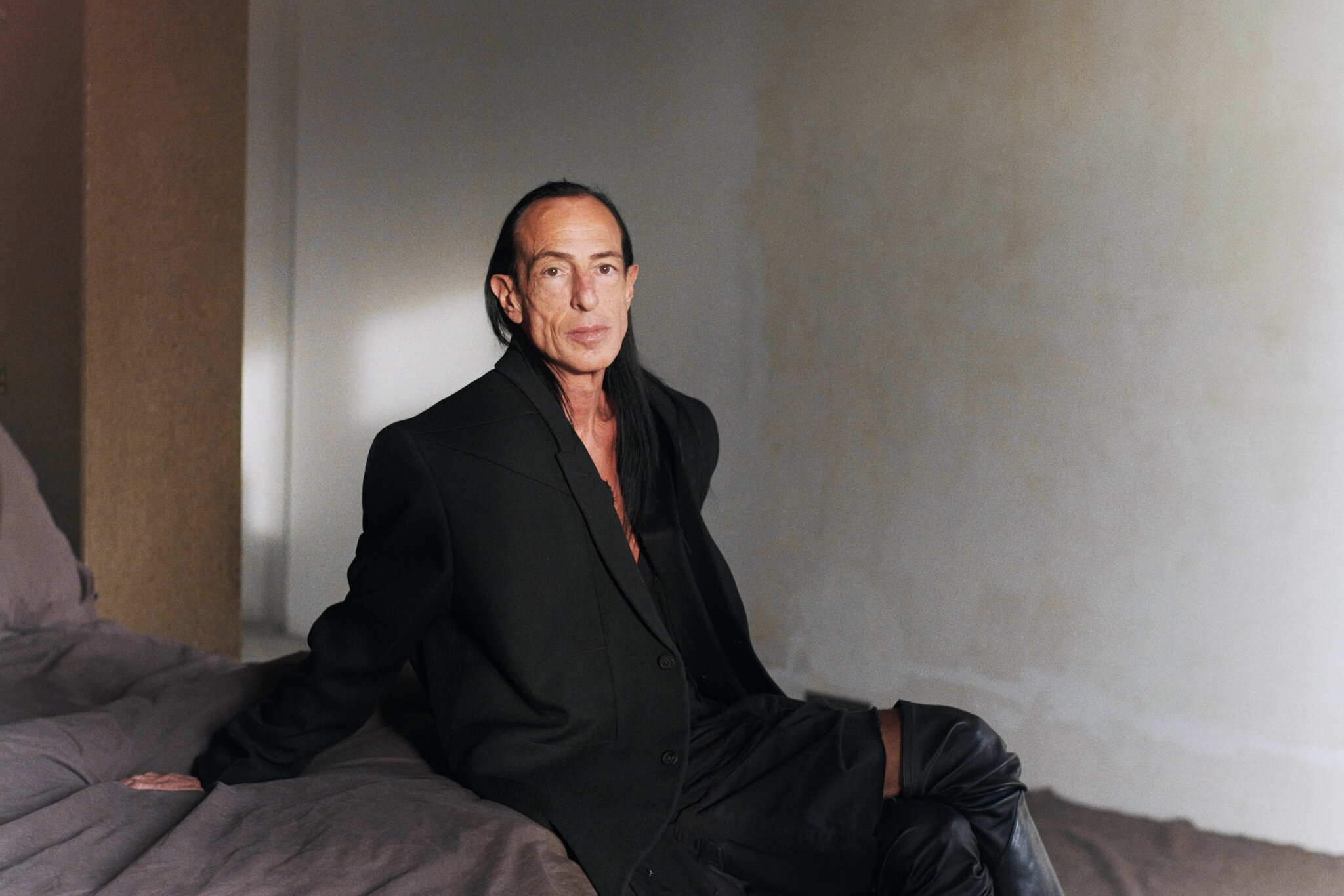Rick Owens is not just a designer — he is a movement. His brand’s mission statement extends far beyond the runways of Paris or the avant-garde silhouettes that dominate his collections. It embodies an ethos of authenticity, inclusivity, and contradiction. Owens has built a world where elegance and rebellion coexist, where structure meets chaos, and where darkness reveals unexpected light. This 2000-word exploration dives deep into Rick Owens’ mission statement — unpacking its layers of philosophy, artistry, and cultural impact.
The Genesis of Rick Owens’ Vision
Born in Porterville, California, in 1962, Rick Owens started his journey with humble roots and an appetite for the unconventional. His early life in a conservative environment forged the contrast that would later define his work — rebellion against conformity through design.
Owens’ mission has always been centered around authentic expression. Rather than chasing trends, he creates a narrative that reflects the rawness of life — its imperfections, contradictions, and evolution. In his own words, “The clothes I make are my autobiography.” Every garment he designs carries a piece of his soul: the calm he seeks, the chaos he’s survived, and the idealism he continually redefines.
This honesty in his mission sets him apart from many in the fashion industry. Owens’ purpose is not to please the masses but to question beauty, identity, and form. His work challenges the notion of perfection, offering instead a vision of beauty found in asymmetry, imperfection, and emotion.
The Core of Rick Owens’ Mission Statement
At its heart, Rick Owens’ mission can be distilled into five core principles:
1. Authenticity Over Conformity
Owens’ creations reject mainstream glamour. He does not cater to trends but crafts his own world — raw, sculptural, and honest. His mission is to make fashion that reflects the human condition, not commercial expectation. In his view, authenticity is a moral stance.
He once remarked that he designs “for the silent rebellion” — those who resist societal molds yet express themselves quietly through art, style, and substance. His garments are armor for the introspective, a means to communicate depth without words.
2. Inclusivity and Empathy
Contrary to the elitism often associated with luxury fashion, Owens’ work embodies a message of empathy and inclusion. His shows feature diverse models — across race, gender, and body type — redefining beauty standards. He speaks openly about celebrating differences, stating that his collections explore “empathy, inclusion, exclusion, shame, pride, and the need for acceptance.”
His mission challenges the rigid constructs of the fashion world. Rather than projecting perfection, he embraces humanity in all its shades.
3. Sustainability and Ethical Responsibility
Owens’ mission also involves responsibility toward the planet. While he avoids the greenwashing that often plagues fashion marketing, his brand emphasizes longevity and durability. Each piece is crafted with precision and purpose, meant to endure time rather than expire with seasons.
His materials are carefully chosen, his production mindful. He often revisits designs rather than discarding them, believing that “good ideas deserve to be celebrated again.” This cyclical approach aligns with sustainability by valuing continuity over excess.
4. The Celebration of Duality
Owens’ philosophy thrives in contradiction. His designs merge softness and severity, grace and aggression, luxury and humility. These dualities are not accidental — they are his way of expressing the complexity of existence.
He often speaks about exploring the tension between order and chaos, a concept visible in his sculptural shapes, flowing drapes, and raw edges. His mission invites wearers to accept their contradictions — to find unity in diversity, strength in vulnerability.
5. Art as Communication
For Owens, fashion is not a commodity but a medium of expression. His mission is to use clothing as a language — to communicate ideas about identity, culture, and emotion. Each collection serves as a dialogue between himself and the world.
He merges architecture, performance, and art into his presentations. His runway shows are not just displays but rituals — moments that provoke reflection and emotion. Whether it’s dancers intertwined in movement or models carrying each other in solidarity, his art tells stories about connection and humanity.
The Philosophy Behind the Aesthetic
Rick Owens’ mission is inseparable from his aesthetic vocabulary — a blend of architectural minimalism, gothic romance, and punk futurism. Every drape, fold, and stitch carries philosophical intent.
Owens is fascinated by the human form and its imperfections. His garments sculpt the body while distorting it, creating tension between concealment and revelation. The result is fashion that transcends gender, embracing the androgynous and the universal.
Color plays an equally symbolic role. Black, his signature shade, is not merely aesthetic but ideological. He describes black as a “renunciation of status” — a way to focus on form and texture rather than distraction. To him, black is purity, clarity, and introspection.
Meanwhile, his preference for off-white and muted tones represents the fragility of humanity — worn, imperfect, and beautiful in decay. His mission is not to paint a perfect picture but to celebrate the poetry of imperfection.
The Emotional Resonance of His Mission
Owens’ mission is deeply emotional. His fashion reflects internal landscapes — loneliness, desire, conflict, transcendence. In a world obsessed with surface beauty, he invites us to look inward.
When asked about what drives him, Owens said:
“Fashion is an extension of the human experience. It’s about what we are, not just what we wear.”
This emotional honesty is rare in an industry often driven by marketing and spectacle. His mission is personal yet universal — to create garments that make people feel seen, not judged.
Through his work, Owens reaches those who feel misunderstood or alienated. His collections offer solace and empowerment. They whisper to the outsider: “You are not alone.”
Cultural and Artistic Context
Owens’ mission is inseparable from art and culture. He draws inspiration from ancient architecture, modern sculpture, classical drapery, and brutalist design. His work often references artists like Le Corbusier, Fortuny, and Rodin.
This interdisciplinary approach elevates his mission beyond clothing. His designs inhabit museums, exhibitions, and installations, where fashion becomes fine art.
His 2018 exhibition at the Triennale di Milano, “Subhuman Inhuman Superhuman,” epitomized his mission. The show fused sculpture, photography, furniture, and garments to explore the boundaries between humanity and transcendence. It was less a retrospective and more a manifesto — a declaration of his commitment to exploring what it means to be human in all its forms.
The Social Dimension of His Mission
Rick Owens is not only an artist but a commentator on society. His mission often critiques consumerism, vanity, and the disposable culture of modern fashion. Through his subdued palette and timeless cuts, he advocates for restraint and mindfulness.
In an age where social media amplifies excess, Owens’ message is refreshingly introspective. He speaks to those seeking meaning rather than attention. His minimalism is not emptiness but intentional silence — a protest against noise.
Moreover, Owens promotes freedom of identity. His gender-fluid silhouettes challenge the binary norms of fashion, reflecting a mission that celebrates individuality without labels. By doing so, he contributes to broader cultural conversations about self-expression, gender, and belonging.
The Business Ethics of the Brand
Despite his avant-garde nature, Rick Owens has achieved commercial success while staying true to his mission. His brand operates with integrity, avoiding exploitation and overproduction. He maintains close relationships with his manufacturers in Italy and prioritizes craftsmanship.
His business model mirrors his philosophy — measured growth, ethical sourcing, and creative autonomy. He refuses to compromise artistry for profit, believing that authenticity itself has economic value in a market saturated with imitation.
The Legacy and Future of His Mission
Owens’ mission continues to evolve. As the fashion industry grapples with issues of sustainability, inclusivity, and mental health, his long-standing principles have become increasingly relevant.
Younger designers cite him as an influence not merely for his silhouettes but for his philosophical depth. His commitment to introspection, responsibility, and emotion has reshaped the dialogue around what fashion can represent.
Looking ahead, Owens’ mission is poised to inspire a generation of creators who see fashion not as an industry but as an instrument for social and emotional transformation.
Conclusion
Rick Owens’ mission statement can be summarized as a commitment to truth — aesthetic, emotional, and moral. His world is built on contradictions: beauty in imperfection, strength in fragility, and luxury in restraint.
He does not design for spectacle but for meaning. Every collection is a chapter in his autobiography, reflecting the journey from chaos to calm, darkness to enlightenment. His work urges us to confront ourselves — to find art in discomfort, and peace in authenticity.
Owens’ mission challenges us all: to live intentionally, dress meaningfully, and embrace the duality of being human.
FAQs
1. What is Rick Owens’ main mission in fashion?
Rick Owens’ mission is to express authenticity and emotion through design. He aims to challenge societal norms of beauty and promote inclusion, introspection, and artistic integrity.
2. How does Rick Owens’ mission influence his designs?
His mission translates into sculptural, minimalist designs that emphasize form, texture, and duality. Each piece tells a story of contrast — blending elegance with rebellion.
3. Does sustainability play a role in Rick Owens’ mission?
Yes. Owens values durability, quality, and ethical production. His practice of revisiting past designs reflects a commitment to sustainability through longevity and minimal waste.
4. What makes Rick Owens’ mission different from other fashion designers?
Unlike many designers who prioritize trends, Owens builds a philosophical universe. His work is autobiographical, emotionally charged, and deeply rooted in art and cultural commentary.
5. How has Rick Owens’ mission impacted the fashion industry?
Owens has redefined the meaning of luxury and beauty. His influence encourages authenticity, challenges gender norms, and inspires designers to think of fashion as storytelling rather than consumerism.

